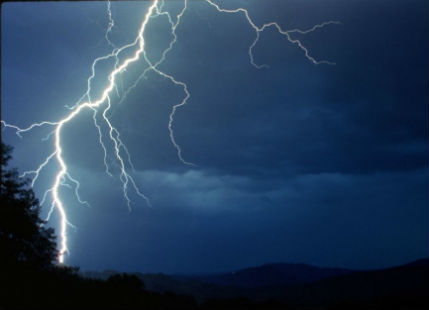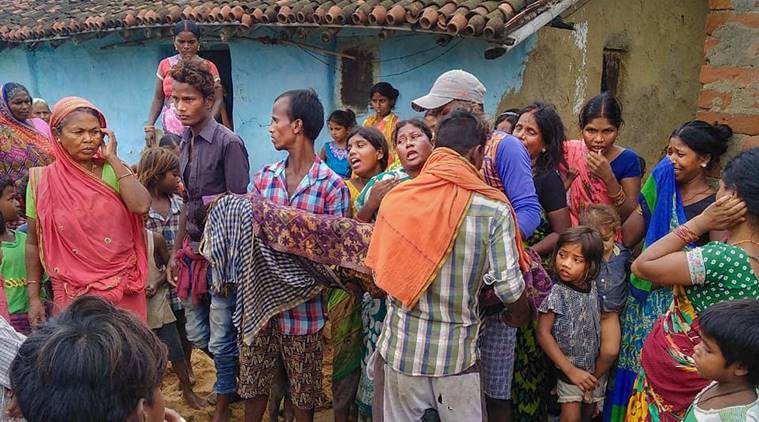OdishaPlus Bureau
A combination of above-normal temperatures in eastern Uttar Pradesh and Bihar and moist southerly winds from the Bay of Bengal led to an “instability” in the atmosphere, resulting in large-scale incidents of lightning that killed over 150 people in these two states in the last fortnight, weather experts have said.
 Laxman Singh Rathore, former director-general of the India Meteorological Department (IMD), said eastern India usually witnesses thunderstorms and lightning during pre-monsoon and the onset of monsoon.”Whenever the conditions are ripe, the confluence of heating and moist winds leads to the formation of very dense clouds. This also leads to severe instability in the atmosphere, which results in thunderstorms and lightning,” he said.
Laxman Singh Rathore, former director-general of the India Meteorological Department (IMD), said eastern India usually witnesses thunderstorms and lightning during pre-monsoon and the onset of monsoon.”Whenever the conditions are ripe, the confluence of heating and moist winds leads to the formation of very dense clouds. This also leads to severe instability in the atmosphere, which results in thunderstorms and lightning,” he said.
In local parlance, the phenomenon is also known as “Kal Baisakhi”, Rathore said, referring to the destruction due to thunderstorms and lightning during the month of “Vaisakha” in the Hindu calendar. It is also known as nor’ wester. Mahesh Palawat, vice-president, Skymet Weather, said the phenomenon is not new to areas adjoining the Chhota Nagpur hills like Bihar and West Bengal. The “cloud-to-earth” activity is also more in this area.
“This weather phenomenon usually occurs in the pre-monsoon and onset of monsoon days. But due to climate change, this is also being delayed,” Palawat said, adding that Bihar has been witnessing above-normal temperatures for the last two-three days. Bihar and eastern Uttar Pradesh have witnessed over 150 fatalities due to lightning strikes in the last fortnight.

S D Pawar, a scientist with the Indian Institute of Tropical Meteorology (IITM), Pune, said there has been an increase in lightning activity over almost all districts of Bihar and eastern Uttar Pradesh since the last two days. Pawar, who heads a project on thunderstorms and lightning at the IITM, said northeast India, Maharashtra, parts of Telangana and Andhra Pradesh, eastern Uttar Pradesh, Bihar and parts of West Bengal are known to be lightning prone. However, most deaths due to lightning strikes take place in Bihar, Uttar Pradesh, Odisha, and Maharashtra.
According to an IITM study, over 2,000 lightning-related deaths take place in the country annually, most of which are reported from these states, Pawar said. He said the study observed that a large number of people working in farms or who had taken shelter under trees were killed due to lightning strikes. Seventy percent of lightning strike victims were those standing under trees, Pawar said.
“The timing also matters. Although there is no fixed time, it has been observed that in June, lightning strikes occur in the afternoon in Maharashtra, Bihar and Uttar Pradesh. This is the time when people work in farms,” Pawar said. A lot of agriculture-related activity takes place in June.
 Pawar said although northeast India records the maximum number of incidents of the lightning strikes, these mostly occur in the evening, when very few people work in farms, reducing the chances of deaths. “We are conducting a study on the patterns and timing of lightning strikes in different parts of the country,” Pawar, who was on the Maharashtra government’s expert panel to study deaths due to lightning strikes, said. He said the IITM has set up 83 lightning-detection centers across the country.
Pawar said although northeast India records the maximum number of incidents of the lightning strikes, these mostly occur in the evening, when very few people work in farms, reducing the chances of deaths. “We are conducting a study on the patterns and timing of lightning strikes in different parts of the country,” Pawar, who was on the Maharashtra government’s expert panel to study deaths due to lightning strikes, said. He said the IITM has set up 83 lightning-detection centers across the country.
IMD director general Mrutyunjay Mohapatra said the states were alerted about the impending weather pattern. “We send information to the state emergency operation center concerned. Plus our Regional Meteorological Centre at Patna also shares information with the state disaster management authority, districts, and media,” he said.
Mohapatra, however, said there is scope for improvement to ensure that the information reaches out to the last person. “If people are educated about what needs to be done when lightning occurs, it will be helpful in reducing the number of deaths,” Pawar said.






















